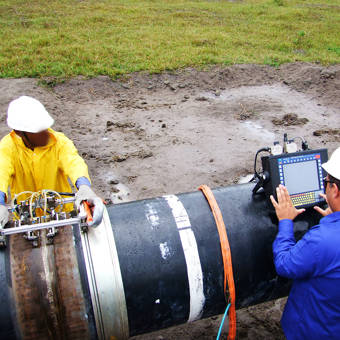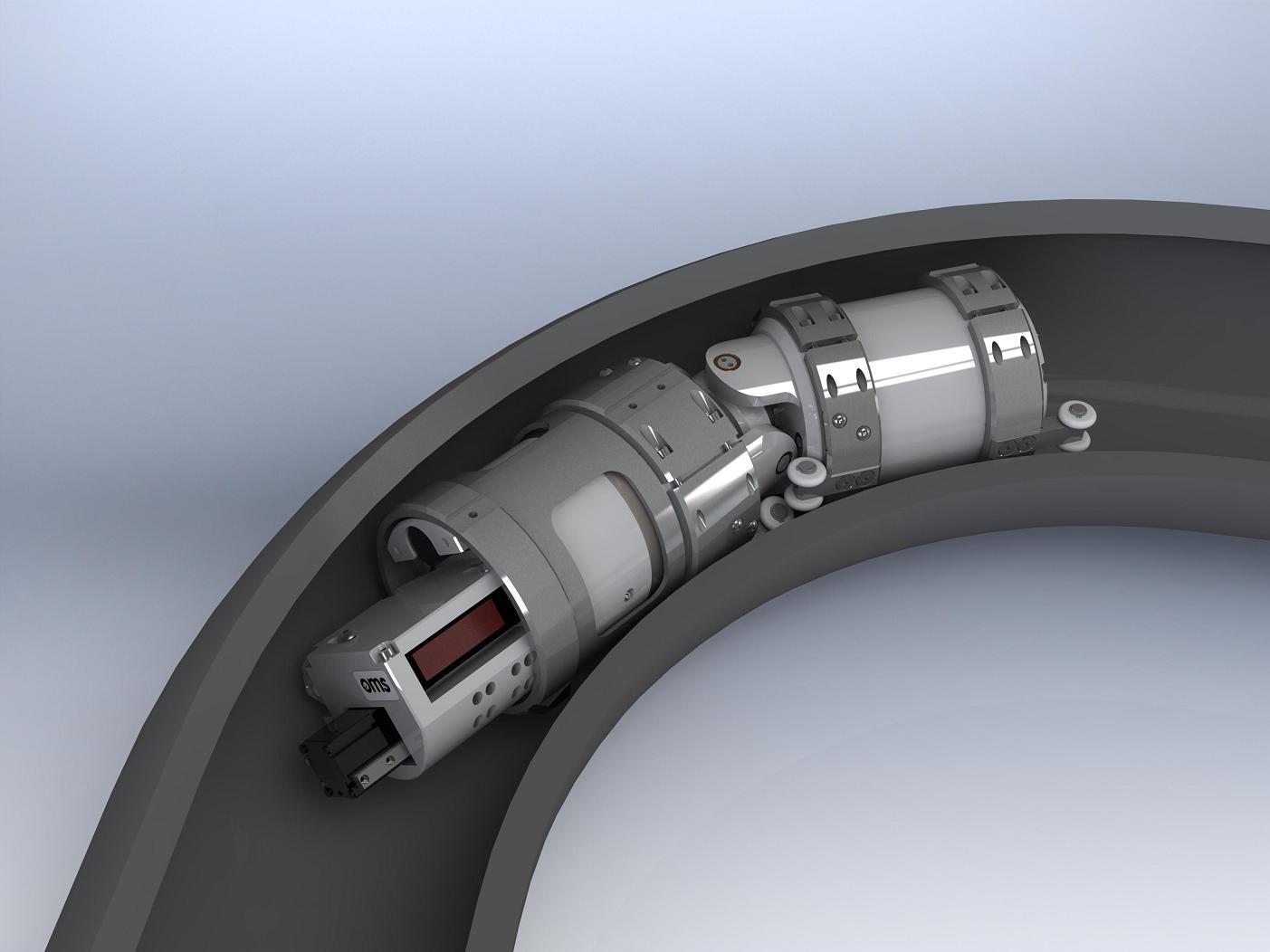Safety First: Comprehensive Pipeline Welding Inspection for Every Project Stage
Safety First: Comprehensive Pipeline Welding Inspection for Every Project Stage
Blog Article
Maximizing Performance: Pipe Welding Evaluation Ideal Practices
In the world of pipeline building and construction, the stability and safety of bonded joints are vital. Guaranteeing that welding examinations are carried out efficiently and properly can substantially impact the total quality of the task. By executing ideal methods for pipe welding assessment, companies can enhance processes, lessen errors, and improve project timelines. From using cutting-edge innovation to developing strict examination protocols, there are many strategies that can be utilized to make the most of performance in this crucial element of pipe construction - Pipeline Welding Inspection. The careful focus to detail needed in welding examination holds the essential to the long-lasting durability and reliability of the pipes, making it a topic of utmost importance in the industry.

Significance of Reliable Welding Examinations
Efficient welding evaluations play a critical role in guaranteeing the architectural stability and security of pipes. Correct examinations are important to determine any type of flaws, stoppages, or imperfections in the welded joints that could compromise the overall integrity of the pipeline system. By conducting comprehensive evaluations, examiners can discover problems early, stopping prospective leaks, ruptures, or failures that could have serious ecological and safety and security effects.
Precise and timely welding inspections also aid in keeping conformity with market requirements and regulations. Adhering to these criteria is not just a legal requirement yet additionally a needed procedure to guarantee the reliability and long life of the pipes. Additionally, efficient inspections can add to cost savings by decreasing the requirement for costly repairs or substitutes due to welding defects that can have been avoided or corrected throughout the evaluation process.
Utilizing Modern Technology for Evaluations
To boost the effectiveness and accuracy of pipeline welding assessments, the integration of sophisticated technologies has come to be progressively imperative in making sure exact and comprehensive analyses of bonded joints. Utilizing innovation for examinations provides many advantages, including enhanced performance, boosted precision, and enhanced precaution. One of the vital technical developments in pipe welding examinations is making use of automated ultrasonic testing (AUT) systems. These systems can scan welds swiftly and properly, providing comprehensive data on prospective issues or concerns within the weld joint. Additionally, remote visual evaluation (RVI) tools such as robotic spiders furnished with electronic cameras permit inspectors to access and evaluate difficult-to-reach areas without the need for comprehensive disassembly or hand-operated intervention. Moreover, the application of digital systems for information evaluation and reporting enhances the assessment procedure, allowing real-time data interpretation and seamless documentation. By accepting these technological solutions, pipe welding examinations can be carried out better, resulting in better welds, enhanced general safety, and lowered job timelines.
Establishing Clear Assessment Protocols
Establishing clear examination protocols is necessary for ensuring consistency and integrity in the pipeline welding evaluation procedure. These protocols work as a collection of standards that outline the particular actions, standards, and methods to be complied with throughout examinations. By clearly defining the assessment methods, all inspectors involved in the process can comprehend their obligations and functions, causing an extra efficient and standardized evaluation process.

Normal testimonial and updates to the examination methods are additionally crucial to adjust useful source to altering market requirements and demands. By constantly refining and enhancing the protocols based on feedback and lessons learned, pipe welding examinations can promote the finest criteria and regulative compliance.
Training and Certifications for Inspectors

Educating and qualifications for examiners are critical in ensuring the capability and efficiency of individuals entrusted with managing pipeline welding procedures - Pipeline Welding Inspection. Appropriately trained assessors possess the necessary expertise and skills to effectively examine weld quality, adherence to welding treatments, and compliance with industry requirements and regulations
Qualifications, such as those provided by the American Welding Culture (AWS) or the American Petroleum Institute (API), confirm an examiner's proficiency and capacity to carry out examinations view publisher site to the greatest criteria. These accreditations usually need strenuous training, evaluations, and recurring professional growth to ensure that examiners remain current with the most current advancements in welding innovation and examination methods.
Along with official certifications, constant training programs play a crucial function in improving assessors' capabilities. These programs cover a large array of topics, including welding processes, flaw discovery, safety protocols, and appropriate codes and criteria (Pipeline Welding Inspection). By buying comprehensive training and accreditations for examiners, firms can promote the integrity of their pipeline welding projects and reduce the dangers linked with substandard welds
Continuous Improvement in Evaluation Processes
Building upon the foundation of qualified and experienced assessors, continual renovation in examination procedures is essential for ensuring the ongoing quality and compliance of pipe welding procedures. By applying a system of continual renovation, pipe welding assessment processes can evolve to meet the transforming needs of the market, technical advancements, and regulative requirements. This entails regularly examining and evaluating examination procedures, devices, and methods to recognize areas for enhancement.
One trick aspect of constant improvement in inspection procedures is feedback. Collecting input from examiners, welders, engineers, and various other stakeholders enables a thorough evaluation of current techniques and the identification of possible areas for renovation. Furthermore, leveraging analytics and information can provide beneficial insights right into the effectiveness of examination processes, making it possible for notified decision-making for optimization.
In addition, investing in training and growth programs for inspectors can make certain that they are geared up with the current knowledge and abilities to perform their tasks successfully. Continuous renovation is a dynamic process that calls for dedication and commitment from all stakeholders to drive quality in pipe welding inspection methods.
Verdict
Finally, making the most of efficiency in pipe welding evaluations is essential for ensuring the top quality site and security of infrastructure tasks. By using technology, developing clear procedures, providing correct training and accreditations for inspectors, and continually enhancing examination processes, companies can enhance their operations and lessen risks. It is imperative for markets to prioritize effective welding inspections to preserve high standards and satisfy regulatory demands.
Reliable evaluations can add to cost financial savings by decreasing the requirement for pricey repair work or substitutes due to welding defects that might have been protected against or fixed throughout the examination process.
Developing clear examination protocols is necessary for ensuring consistency and dependability in the pipe welding inspection process. By plainly specifying the inspection protocols, all examiners entailed in the procedure can understand their functions and obligations, leading to a more standardized and effective inspection workflow.
Clear evaluation procedures assist in lowering the chance of errors or oversights during the inspection process.Building upon the foundation of qualified and trained inspectors, continuous improvement in assessment procedures is crucial for ensuring the ongoing quality and compliance of pipeline welding procedures.
Report this page